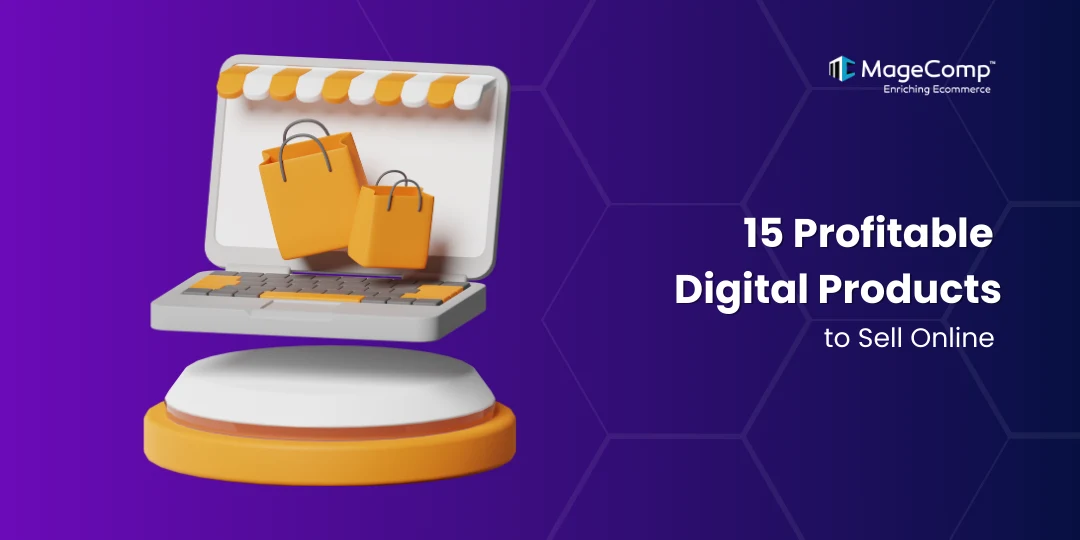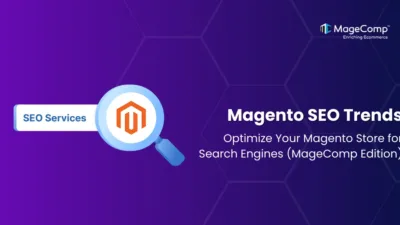The digital economy is thriving, and selling digital products is one of the best ways to create passive income online. The key reason is that digital products do not require inventory, shipping, or storage and are scalable – unlike products that are physical goods.
As an entrepreneur, freelancer, or content creator – selling digital products is a great opportunity to profit from your expertise. If you’re developing educational materials, eBooks, online courses, downloadable templates, or even software, the range of digital products that can be sold on the internet seems endless. If boundless online income with minimum capital investment is what you’re after – digital products are your ticket to passive income.
Let’s dive into what digital products actually are and why they have much greater potential than physical goods.
What are Digital Products?
Digital products are products that don’t have any physical existence and can be purchased and consumed online in a digital format. Digital products are unique from physical products in that they are not space-dependent and do not require manufacturing, warehousing, or any logistics.
Digital products can be software applications, music files, digital art, educational content, digital templates, graphical design assets, etc. The unlimited sales opportunity, with no additional cost to the producer, gives digital products a unique benefit for purchase. Their many benefits make digital products appealing to both businesses and consumers wanting access to quality digital products that can be efficiently assessed or used.
Why are Digital Products more Preferable Than Physical Products?
- Cost-minimal – Once a digital product is created, you sell the product over and over again without the operational costs.
- Scalable – Unlike physical products, digital products do not need to carry inventory, allowing you to serve customers from anywhere.
- Profit margin – Because of no shipping, storage, or production costs, digital products have a significantly higher profit margin than physical products.
- Immediate delivery – The customer receives a new product immediately upon purchase, improving the user experience.
- Automated – Selling digital products is available on many platforms that can be completely automated, allowing for passive income generation.
15 Best Digital Products to Sell
- E-books
E-books are lively digital publications covering a range of topics, such as insightful self-help stories, entertaining fiction, and expertly written material geared to specialized audiences. They are a simple and inexpensive way to publish knowledge and create and engage with a larger, worldwide audience. Writers can even self-publish on platforms like Amazon Kindle or via their website, which engages a more direct connection with their audience.
Pros:
- Low production and distribution costs
- Potential for passive income over time
Cons:
- Requires effective marketing to stand out
- High competition in popular niches
- Online Courses
Engaging and organized learning experiences are often delivered online through a blend of video lessons, comprehensive PDFs, and interactive content. Online courses are gaining significant traction in nearly every industry, including business, technology, and personal development, as they serve a need for expanded flexibility in education.
Popular platforms like Udemy, Teachable, and Skillshare provide a simple way to host and sell courses, allowing instructors to share their expertise and learners to build their skills, all from a distance in their own homes.
Pros:
- High perceived value and premium pricing
- Potential for recurring income through memberships
Cons:
- Time-consuming to create high-quality content
- Requires regular updates to stay relevant
- Digital Templates
Digital templates are professionally designed, pre-made formats for a variety of uses, including resumes, presentations, websites, and social media. Digital templates are a great added benefit for busy professionals, helping users to condense hours of work into one template that is thoughtfully designed and professionally presented.
A digital template can streamline your design efforts and provide an easy-to-personally customized experience by giving you the ability to make the templates your own and personalize them to your style and professional identity. Digital templates can be used for both job applications or to brand yourself on the web and make things look very professional.
Pros:
- Quick to create once expertise is established
- High potential for volume sales
Cons:
- High competition in popular categories
- Needs continuous updates to stay relevant
- Stock Photos and Videos
Stock images and footage are an invaluable way to enhance websites, marketing materials, and content for social media.
From a creative standpoint, photographers and videographers can also license their work through stock footage websites, such as Shutterstock or Adobe Stock, which is a means of monetizing their work. Stock sites help creators distribute and sell their art at high volumes, providing ongoing payment for their labor.
Pros:
- Passive income through multiple downloads
- Consistent demand across industries
Cons:
- Requires high-quality content to compete
- It can be difficult to rank in saturated platforms
- Printables
Printables include an assortment of carefully designed planners, elaborate checklists, or beautiful calendars that users can quickly download and print from their homes. For people who prefer the tactile nature of physical, and organizational tools, printables also give the ease and convenience of digital.
Whether their purpose is to manage daily tasks, plan long-term goals, or keep tabs on notable dates, printables are a useful option that encompasses both ease of use and individualization to assist in personal organization.
Pros:
- Low-cost production and high margins
- Can cater to various niches and hobbies
Cons:
- Niche-specific appeal
- Potential copyright issues if not original
- Software and Mobile Apps
Software and apps solve specific problems and offer solutions through digital tools. Developers can sell licenses or offer subscription models through platforms like Google Play, the App Store, or directly via SaaS websites.

Pros:
- High revenue potential with subscription models
- Scalable with a global audience
Cons:
- Requires significant technical expertise
- Ongoing maintenance and customer support
- Audio Content and Music
Audio includes podcasts, soundtracks, and audiobooks that can be sold or licensed. Musicians and creators can sell their work through sites like Bandcamp or Patreon, creating avenues for engagement with fans and revenue generation.
Pros:
- Creators can test different revenue models, whether direct sales or subscriptions, maximizing their earnings potential.
- Because audio can be made and shared online, creators can reach a worldwide listenership, increasing market exposure.
Cons:
- In order to stand out, audio often needs to be produced and polished professionally. Productions can take time and money to create.
- Building and engaging an interested audience takes time and effort, which can be hard for new creators to navigate in an overwhelmed space.
- Membership Sites
Membership sites offer a plethora of exclusive knowledge, valuable tools, and lively community experiences for a regular fee. These sites can include extra blog posts that dive deeper into specific topics. These full online learning courses support and foster skill-building and attractive digital downloads like eBooks, templates, or graphics. By signing up for a membership site, individuals access a curated experience that aims to expand their learning alongside others who are interested in similar topics.
Pros:
- A recurring revenue model builds a loyal community.
Cons:
- Requires ongoing content updates
- High effort to maintain member engagement
- Web Design Themes and Plugins
Developers can create and sell themes and plugins that greatly extend the usefulness of websites. Well-known services like ThemeForest and the WordPress marketplace offer an exciting outlet for designers to share their designs and reach a wide audience of purchasers.
Pros:
- There is a high demand for website owners looking for ways to improve their websites, allowing a market for new or innovative solutions to be profitable.
- Given the right circumstances and/or a strong enough product, developers can make serious profit, especially if the product rises in popularity and you can become well-known.
Cons:
- Developing themes and plugins successfully requires a strong knowledge of coding and design principles, which can be a barrier for people who do not know or have someone reputable to service on their behalf.
- Technology changes so rapidly, so a developer must commit to constant updating and upkeep of their products to continue to work and remain safe.
- Digital Art and Illustrations
Digital artists can display and sell their custom illustrations or digital prints for personal or commercial purposes. Websites like Etsy and Creative Market are thriving marketplaces where creators can reach and sell to a global audience of buyers, developing their exposure in the creative space.
Pros:
- The marketplace is global, and demand continues to grow for the products and services being offered.
- Digital downloads are scalable, allowing creators to sell to a larger audience efficiently.
Cons:
- There is significant competition, and raising above the competition is difficult.
- Copyright infringement is a real threat and may lead to legal issues.
- PDF Guides and Workbooks
Guides and workbooks in PDF format are beneficial tools that help users methodically complete the work or learn a new skill with organized information. The organized format helps the user not only understand the content but approach their learning step by step. They are also fairly easy to create, allowing the developer to produce relevant content per niche and audience, making it a strong tool for marketing.
Pros:
- Producing the product or service typically requires minimal investment, making it financially accessible for many.
- Once established, there is a chance to generate income without continuous effort, allowing for greater financial freedom.
Cons:
- The target audience may be limited, which could affect overall sales and market reach.
- There may be numerous competitors in the market, making it challenging to stand out and attract customers.
- Licensable Content
Creators can license varied digital content, such as enticing videos, nice images, and catchy music, to businesses looking to grow their businesses. Licensing gives creators a dependable, repeatable income stream, turning their creations into money. Meanwhile, businesses can utilize premium content at a reasonable cost, providing creators with enough compensation to continue doing what they love.
Pros:
- Creating quality content can lead to ongoing revenue streams, allowing for income generation over time with minimal ongoing effort.
- There is a significant demand for high-quality content across various platforms, providing creators with numerous opportunities to reach diverse audiences.
Cons:
- Navigating the legal landscape related to content creation can be challenging, including understanding copyright laws and licensing requirements.
- Consumers expect a high standard of quality in content, which can require significant time and resources to meet.
- 3D Models and Digital Assets
Three-dimensional models are at the core of video games, simulations, and animations, portraying dynamic worlds and characters with incredible realism and detail. Designers can exhibit their detailed models for sale on many platforms like TurboSquid and Sketchfab, allowing a worldwide audience to find, buy, and use digital assets to develop their work.
Pros:
- There is a significant increase in demand within the gaming and virtual reality sectors, indicating a robust market opportunity.
- The potential for high pricing exists, allowing for potentially strong profit margins.
Cons:
- Advanced design skills are necessary, which may pose a barrier for some individuals or teams.
- The market is niche and characterized by high levels of competition, making it challenging to establish a foothold.
- Website Flipping
Website flipping is a lively process of buying a website that already exists, modifying its features and generating traffic, potentially selling it for a profit. Effective search engine optimization (SEO), coupled with intelligent marketing, permits website flippers to inflate a website’s value, sometimes selling for multiple times the original purchase amount.

The practice not only involves understanding digital trends, but it also requires a creative approach to enhancing a website’s design and functionality that can keep a website flipper entertained as they profit off their findings.
Pros:
- Investments in this area can yield significant returns, attracting those looking to maximize their financial gains.
- Engaging in this market allows for the improvement and expansion of digital resources, which can lead to increased value and effectiveness.
Cons:
- There is a degree of uncertainty associated with this type of investment, and potential investors should be aware of the risks involved.
- Successfully navigating this field often necessitates a solid understanding of search engine optimization and marketing strategies, which can be a barrier for those lacking experience in these areas.
- Subscription Boxes for Digital Content
Digital subscription boxes provide an enjoyable selection of products, such as engaging e-books and innovative software, to design elements and premium content.
Each subscription delivers a curated collection on a recurring basis, allowing subscribers to experience something new and fabulous frequently. Each subscription promises a wealth of useful content according to the interests and/or needs of the audience, adding to their personal as well as professional development.
Pros:
- Provides a consistent income stream, allowing for more predictable financial planning.
- Helps build long-term customer loyalty, which can lead to sustained business growth.
Cons:
- Necessitates ongoing value addition to maintain customer interest and satisfaction.
- Demands significant efforts in customer retention to prevent attrition and keep clientele engaged.
How to Start Selling Digital Products?
To successfully sell digital products, it takes more than just having a product. Below are seven important steps you should be performing.
- Choose Your Niche – Ensure that there is demand for your product. Determine what need it is fulfilling and its purpose.
- Research Your Competition – Identify unique aspects of your product based on research.
- Select Your Selling Platform – This could be a marketplace (Etsy, Creative Market, Gumroad) or a self-hosted e-commerce website.
- Optimize Your Product Listings – Use informative but simple titles in conjunction with important keywords needed for potential buyers to locate your product descriptions. Develop a list of benefits and include visual media.
- Price Strategically – Search similar products to find a price point that promotes competition. Higher-end products (for example, a course) should have a price breakdown that includes premium access.
- Market – Use marketing on social media, newsletters, or influencers to market your product.
- Provide Customer Service – Always be available to answer any questions that arise and provide value based on additional resources or updates to your products. By doing these seven steps, you will be able to start to sell digital products online, reach an audience, and produce a profit.
Wrap Up!
Selling digital products online is a great way to earn some passive income while scaling your business to a global audience. Digital products can be produced at a low cost and can scale to mass audiences, making it easy to maximize profits while reaching a larger audience.
Starting a successful digital product business takes some planning when choosing the right platform, conducting research on your target audience, and ultimately developing valuable content that is consistently high quality. It is also essential to anticipate challenges ahead of time, such as competition and intellectual property protection.
However, with the right amount of planning and commitment, being able to successfully sell digital products can be both sustainable and profitable.





